how to study and understand fictional characters
Analysing characters
When studying literature, you will be asked to write about the characters in stories, plays, and novels. Most people find it easy to describe characters – that is, what they look like and what they do in the story. But it is much more difficult to analyse them. That’s because analysing characters in fiction requires not only insight into human behaviour but also the ability to make moral assessments about their psychology, motivations, and the consequences of their behaviour. This skill distinguishes an academic study of literature from casual leisure reading.
You need to know how fictional characters have been constructed by the author. After all, the very nature of a literary character is that it is a fictional construct. It’s an account of somebody who doesn’t exist in real life, but has been created by words written on paper. The character is imaginary, but if the author has been successful, we think of these characters as if they were real people. This attitude is described as a ‘suspension of disbelief’: that is, we are temporarily willing to believe that the character and the story are like real people.

Eugene Onegin
Character analysis also requires the ability to understand the complex relationship between fiction and real life – a skill which requires a fairly mature reading experience. Fortunately, most people have been exposed to fictional narratives from an early age, and will already be experienced readers by the time they are asked to make such analyses.
What is a fictional character?
A fictional character is somebody in an imaginative literary work created by an author. The character could be Peter Rabbit, David Copperfield, Macbeth, or Madame Bovary. In other media, it could be Luke Skywalker (feature film), Donald Duck (cartoon), Dan Dare (comic), Super Mario (computer game), or someone from The Archers (radio).
What we can know about a character in fiction depends almost entirely on what the author decides to tell us. Authors normally create characters using any number of devices. They might reveal to us –
- their name
- their physical appearance
- how they dress
- how they behave
- what they think and feel
- what they say
The composition of a character
Authors are at liberty to combine these elements in whatever way they choose. They may give different levels of emphasis to any of these options. There are no fixed rules they must follow, but the outcome must be a coherent piece of characterisation.
Charles Dickens for instance went to a lot of trouble to give his characters unusual and memorable names – Uriah Heep, Lady Honoria Deadlock, Josia Tulkinghorn, and Inspector Bucket for instance. At the other extreme, the Czech writer Franz Kafka reduced his most famous protagonist to the single letter K, with no first name or surname at all.
Some characters are memorable because of the way they are depicted visually. For instance, Miss Havisham in Great Expectations has shut herself away in an old house for years and years wearing the wedding dress she wore on the day she was jilted at the altar. She is described as a cross between a waxwork and a skeleton.
The fictional character might have a peculiar way of speaking, or a physical habit that becomes easily recognisable. Mrs Malaprop in Sheridan’s play The Rivals is memorable because she often uses the wrong word in her statements. She says “promise to forget this fellow – to illiterate him, I say, quite from your memory” when of course she means obliterate. This characteristic is so easily recognisable that her name has been attached to that particular mis-use of language ever since – malapropism.
The good thing about this fictional technique is that it helps to fix the character in the audience’s mind. Its weakness as a technique is that it can reduce the character to no more than a verbal tic.
Some fictional characters are not given any name at all, and we know nothing about their appearance. Fyodor Dostoyevski’s Notes from Underground features a character whose name we don’t know, and whose appearance is never described. All we are told is what the character thinks – which is a torrent of existential rage against the world.
So – there are no fixed rules for the creation of fictional characters. Authors are free to tell us anything they wish about the characters they create. As readers we can merely hope that they are at least convincing or at best memorable. However, you need to be able to explain the mechanisms used to achieve this effect.
How to analyse a character
You can think of character analysis as a three part process. If you are a beginner, it will be safest to write about these parts separately. If you are more experienced, the parts may be combined – though you will still need to give your writing some structure.
- First – identify the character
- Second – describe the character
- Third – explain the character
Identify
In the first part of the process you are merely choosing the character you wish to write about. In many literary studies courses the character will be chosen for you by a question set for an essay or term paper. It is important to choose a character who is genuinely significant and who plays a dramatic part in the story.
Part of identifying a character is knowing their importance in the story. You will probably have no difficulty in distinguishing important characters (the protagonist or most significant character for instance) from lesser or secondary characters.
Describe
In the second part of the process you are ‘locating’ the character within the story and giving an overview of what part they play in its events. The term ‘describe’ implies that you can consider the character in isolation, and give a surface account of their presence in the story. You do not have to look under the surface to discuss any of their psychological motivation at this stage.
Explain
In the third part you will give an account of the character in relation to other people in the story or the play. You should explain what motivates the character, what the significance of their actions might be, and how they relate to other characters in the story or the theme of the work in general. At this stage you might also say something about their role in the story from an artistic point of view. That is, the role of the character in relationship to the events of the narrative.
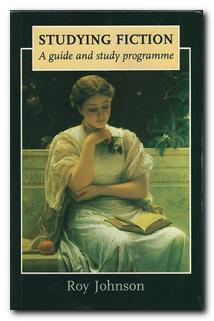 Studying Fiction is an introduction to the basic concepts and technical terms you need when making a study of stories and novels. It shows you how to understand literary analysis by explaining its elements one at a time, then showing them at work in short stories which are reproduced as part of the book. Topics covered include – setting, characters, story, point of view, symbolism, narrators, theme, construction, metaphors, irony, prose style, tone, and interpretation. The book also contains self-assessment exercises, so you can check your understanding of each topic. Best-selling title, written by the author of these web pages.
Studying Fiction is an introduction to the basic concepts and technical terms you need when making a study of stories and novels. It shows you how to understand literary analysis by explaining its elements one at a time, then showing them at work in short stories which are reproduced as part of the book. Topics covered include – setting, characters, story, point of view, symbolism, narrators, theme, construction, metaphors, irony, prose style, tone, and interpretation. The book also contains self-assessment exercises, so you can check your understanding of each topic. Best-selling title, written by the author of these web pages.
![]() Buy the book at Amazon UK
Buy the book at Amazon UK
![]() Buy the book at Amazon US
Buy the book at Amazon US
Character analysis – example
Identify
Joe Gargery in Great Expectations is very significant as a character. He acts as a formative influence on Pip; he is unwavering in his support for him throughout the novel; and he is instrumental in rescuing Pip from moral shoddiness in the final parts of the novel.
Describe
Joe is married to Pip’s elder sister and is therefore technically his brother-in-law; but he acts very much as a protective father-figure during Pip’s early life. Joe is naive, sometimes unconsciously comic, hard working and loving.
Explain
Joe represents the simple good nature that Dickens contrasts with Pip’s self-seeking complexity. His role as a constant in Pip’s life throws into sharp relief Pip’s plunge into increasing bad faith. The character of Joe is used as a fixed point by which we can trace Pip’s downfall and finally his moral redemption and recovery. Joe is also a comic foil against Mrs Joe’s violent behaviour as his termagant wife.
There is also a complex element in Joe’s child-like characterisation in relation to his wife Mrs Joe. He tolerates and never challenges his wife’s abusive behaviour towards both himself and her young brother Pip.
Narrative perspective
Thus far we have basic information about a fictional character – which we might call characteristics. But in addition, the author might provide any of the following information as well.
- what the author thinks about them
- what other characters think about them
- what happens to them
This does not obtain so much in plays, where the author normally prescribes the appearance of characters and what they say – but nothing else. The point of view or perspective in this case is provided by the director of the play, in deciding how the play will be presented and how the characters will behave on stage.
In narrative fiction (novels and stories) you are likely to be presented with information about characters from a number of different sources – from the author, from other characters, possibly from a narrator, and of course from the characters themselves. Not all these items of information carry equal weight, and you will need to make careful discriminations in making your judgements.
Stock characters
What is a stock character? It’s a fictional creation that is a recognisable type who occurs in lots of other stories. This is what’s called a stereotype. Here are some examples you will recognise:
- the miser
- the mysterious stranger
- the wicked stepmother
- the absent-minded professor
- the whore with a heart of gold
- the damsel in distress
- the hard boiled detective
- the femme fatale
- the gentleman thief
New stereotypes are being created all the time – and may be generated by new genres of fiction from film, television, and other media, as well as from the traditional literary genres of story, novel, and play.
Two and three-dimensional characters
The term two-dimensional character is used as an expression of negative criticism to label a character who always behaves in the same way, and does not change or grow as a result of the events in the story. They are sometimes referred to as cardboard or flat characters – as being flimsy, undeveloped, and not particularly credible.
It is a term used in contradistinction to a three-dimensional character which is used to describe fictional characters who have the depth and complexities of real human beings, and are therefore deemed more successful creations.
This ‘third’ dimension might be the capacity to change as a result of events in the story; it might be the successful depiction of contradictory beliefs and behaviour; or it might be acting on an irrational impulse – something which human beings are doing all the time.
For instance, in A Tale of Two Cities Sydney Carton is a cynical and alcoholic barrister who acts in a self-indulgent and disreputable manner throughout the majority of the novel. But at the end of story he takes another man’s place at the guillotine – an act of self-sacrifice which atones for all his past wrongdoings. Dickens makes the change of character credible, and Carton’s last words (his thoughts) have become famous: “It is a far, far better thing that I do, than I have ever done; it is a far, far better rest that I go to than I have ever known.”
Dubious characters
Successfully realised characters are not necessarily likeable or even decent. Authors are at liberty to create characters who are flawed, and they might still be attractive or memorable..
Fagin in Oliver Twist is a grizzly old rogue who runs a children’s criminal gang. He mistreats the members of the gang, tells lies, and is partly responsible for the death of an innocent woman (Nancy). Despite all these negative characteristics, he is so vividly portrayed by Dickens that he remains a standout and very memorable figure in the novel.
Some characters might be likeable even though they commit reprehensible acts. Vladimir Nabokov’s protagonist Humbert Humbert in Lolita is attractively clever and very amusing, even though he abducts and sexually abuses a teenage girl and murders his rival, Claire Quilty. But the first-person account of events Humbert delivers is so full of jokes and witty observations of American life, that we tend to overlook his flaws.
Providing evidence
A detailed character analysis depends on a close reading of the text, coupled with an understanding of the character. It also requires evidence drawn from the text to support any argument about the character.
It is not enough to say that you don’t like a character, or disapprove of something they do in the story. What you are doing is closer to showing that you understand what the author is trying to demonstrate to the reader. This is the reason that it is necessary to understand the literary techniques by which characters are created.
© Roy Johnson 2014
More on How-To
More on literary studies
More on writing skills
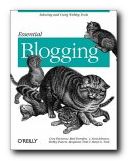 Essential Blogging
Essential Blogging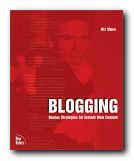 Blogging: Genius Strategies for Instant Web Content
Blogging: Genius Strategies for Instant Web Content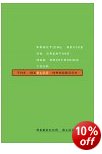 The Weblog Handbook
The Weblog Handbook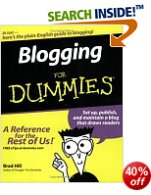 Blogging for Dummies
Blogging for Dummies